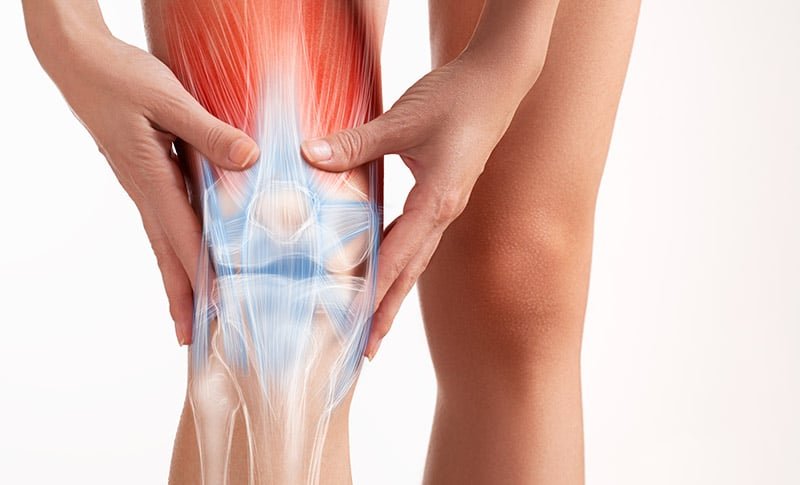
Dr. Sanjay Barik
Knee & Shoulder Surgeon
Meet Our Doctor

Dr. Sanjay Barik
Orthopedic and Joint Replacement Surgeon
Dr. Barik's Orthocare Clinic
- MBBS
- MS - Orthopaedics
Knee Replacement Surgery In Nagpur
Knee Replacement Surgery In Nagpur, also known as knee arthroplasty, is a surgical procedure to reduce pain and improve function in people.thus, who have sustained severe knee joint damage caused by conditions such as osteoarthritis or rheumatoid arthritis.
Firstly In this surgery, damaged or worn parts of the knee joint are replaced with artificial implants, usually made of metal or plastic. This surgery aims to restore mobility, reduce pain, and improve overall quality of life for people who have experienced significant degeneration of their knee joints.
Knee replacement surgery may be considered when conservative treatments such as medication and physical therapy do not sufficiently reduce pain and disability.

What are the common causes for the Knee Replacement Surgery
1. Osteoarthritis: The most common reason for knee replacement surgery is osteoarthritis. Thus, Osteoarthritis is a degenerative joint disease in which the protective cartilage that cushions the ends of bones wears down over time, causing pain, swelling, and decrease joint function.
2. Rheumatoid Arthritis: Rheumatoid arthritis, an autoimmune disease, causes inflammation and damage to the synovium of the knee joint, causing pain, swelling, and deformity of the joint, and in severe cases, the need for knee replacement surgery. Become.
3. Post-Traumatic Arthritis: Once, Knee trauma, such as a fracture or ligament tear, can cause post-traumatic arthritis. Therfore, Over time, this type of arthritis can cause degeneration of the joint and may require a knee replacement.
4. Other inflammatory diseases: Other inflammatory diseases, such as lupus and psoriatic arthritis, can cause damage to the knee joint, and if conservative treatment proves inadequate, eventually requires surgical intervention.
5. Cartilage Defects or Lesions: If there is extensive damage to the articular cartilage in the knee, whether due to injury, repeat trauma, or a disease such as osteochondrosis dissecans, knee replacement surgery may be recommend. It may be necessary.
6. Meniscal tears: Thus, Severe meniscal tears, especially those that cannot be adequately treated with conservative measures or arthroscopic surgery, can ultimately lead to advanced joint degeneration and require knee replacement. will need to be consider.
7. Gout: Once, Gout is a type of arthritis characterize by the buildup of uric acid crystals in the joints, which can affect the knees and sometimes cause irreversible joint damage that requires surgical intervention.
8. Bacterial or Fungal Infections: Rarely, serious infections of the knee joint, whether bacterial or fungal, can cause irreversible damage, and treatment of the infection and restoration of joint function will require knee replacement surgery.
How the Knee Replacement Surgery is done
Knee replacement surgery consists of four basic steps.
- Prepare bones: Firstly, The damage cartilage surfaces at the ends of the femur and tibia are remove, along with some of the underlying bone.
- Place metal implant: Thus The remove cartilage and bone are replace with metal components that restore the surface of the joint.Once, These metal parts can be cement or “pressed” into the bone.
- Patellar surface regeneration: Thus, Cut the underside of the patella (kneecap) and bring it back to the surface with a plastic button. Therefore, Some surgeons do not perform patella replacement in some cases.
- Insert spacer: Thus, Medical-grade plastic spacers are inserted between the metal components to create a smooth sliding surface.
What are need to be taken after the the Knee the Replacement Surgery is done
1. Avoid high-impact activities: Thus, Avoid activities that involve jumping, jerking, twisting, pulling, or running, such as: Examples: jogging, skiing, lifting heavy objects, etc. Thus, These activities increase the risk of falls and can lead to new joint damage.
2. Avoid contact sports: Once, Avoid contact sports such as football, soccer, and skiing.
3. Walk in small steps: Firstly,When changing direction, walk in small steps and avoid turning on the operated leg.
4. Follow your doctor’s instructions: Thus, Therefore, Always follow all instructions and advice from your surgeon.
5. Maintain Physical Therapy Exercises: Once, Continue physical therapy exercises to maintain strong muscles around the knee.
6. Rest: Thus, You will need to rest when you get home and will probably feel tired during her first six weeks. Balance rest with following your rehabilitation program.
7. Avoidance of infections: Try to avoid infections.


